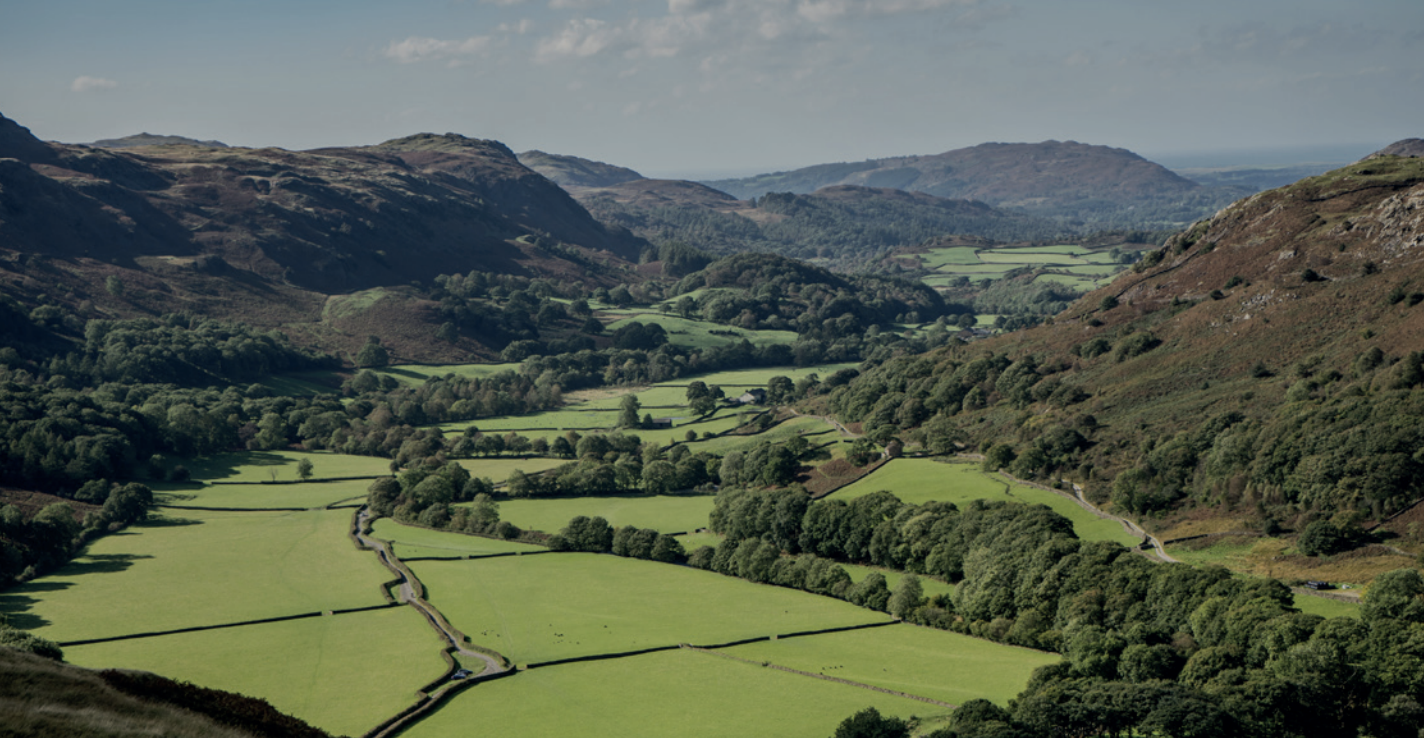
Eskdale begins in the wild, lofty Lake District heartland of the Scafell massif, running south-west to the coast. This is the only place in England where mountains plunge almost directly into the sea. It is a mixed and dramatic landscape, going from steep, craggy and volcanic uplands, through softer, broader land and down to its wide open, tidal estuary at Ravenglass.
Human presence in Eskdale can be traced back to around 8,000BC, when Mesolithic hunters settled by the sea. Later prehistoric sites include both Neolithic and Bronze Age stone circles and settlement remains on Boot Bank and around Devoke Water. There are also burial sites at Eskdale Moor, Bootle Fell, Stainton and Great Grassoms. In Roman times, forts were built on the coast at Ravenglass and high up on the mountain pass at Hardknott, where up to five hundred cavalry would have been garrisoned. Some of the Roman remains at Ravenglass now form part of the Frontiers of the Roman Empire (Hadrian’s Wall) World Heritage site.
Like many other places in the Lake District, Norse settlers and farmers left their mark through numerous place names, including Brotherilkeld meaning ‘the booth of Ulfkell’ and with the use of the word ‘thwaite’ meaning ‘a clearing’. By the 12th century, much of Eskdale was part of the Copeland Forest and used as hunting land, with manors owned by feudal barons. On the coast, Ravenglass developed as a harbour and trading port and to the south, Bootle grew in size with its market and fair charter granted in 1347. It was at the close of the 16th century that the more distinctive Lake District farmsteads began to take their modern form.
In 1875, a narrow-gauge railway was built to take iron ore away to the coast at Ravenglass and then later used to transport granite from Eskdale’s quarries. Today, La’l Ratty, as it’s known locally, is a popular tourist attraction boasting the oldest working 15” gauge locomotive in the world.
Because of its more remote, westerly position, Eskdale didn’t receive the same degree of attention from 18th century visitors as did the other, more accessible valleys. JMW Turner sketched Eskdale Mill at Boot but probably never visited in person, basing his work on an earlier composition by Edward Dayes. Coleridge, however, did pay a visit and wrote passionately about the landscape in his ‘Notebook’ of 1802.
From a conservation perspective, The National Trust now owns and manages a number of farms in upper Eskdale, with a total of 4,959 hectares and the Friends of the Lake District campaigned strongly against a large hydroelectric generation plan in upper Eskdale in the 1940s.
With its high mountains at one end and lovely coastline at the other, and its strong farming and industrial heritage, Eskdale has a very special character.